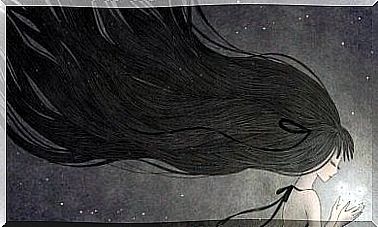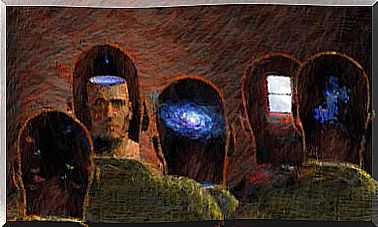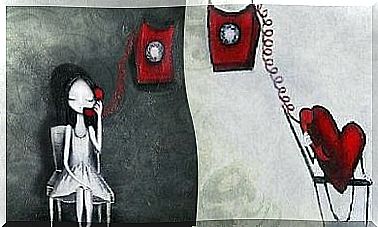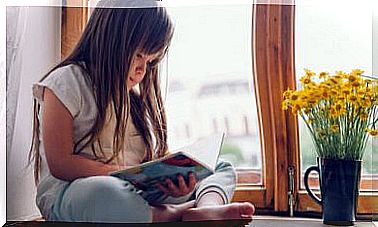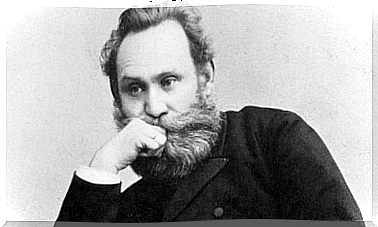How To Interpret A Child’s Drawing Of The Family
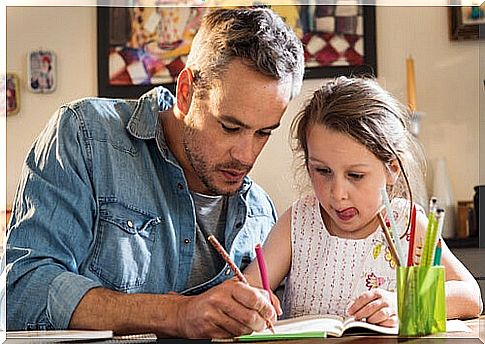
One of the children’s psychological evaluation instruments that has aroused the most interest has been the drawing of the family. With this simple resource the child projects his situation in the family nucleus, his attachments and his jealousy. Now, how can we interpret the drawing of the family in the little ones?
Well, the first thing to understand is the following: a simple drawing will never be definitive to make a diagnosis. First of all, because something like this can only be done by professionals and experts in child psychology. Second, because to reach an objective conclusion, many more clinical tests and other tools are needed. Family drawing is a complementary projective technique, interesting but never conclusive on its own.
On the other hand, it should be noted that this test is, above all, useful to have an overview of the emotional dimensions of the child. We can intuit their values, their fears, their attachments, their affectivity in general. However, we cannot take it as a reference to assess your intellectual development.
Important aspects of a children’s drawing
Just as the child evolves in all aspects, the drawing also shows an evolution as the child himself matures motor and emotionally. Now, an aspect that has been known and has been validated since the beginning of the 20th century is the fact that children’s drawings give many indicators about their emotional universes.
In this way, studies such as the one published in the Journal of Clinical Psychology by Dr. Elizabeth Munstenberg, remind us that asking a child to draw human figures is undoubtedly a very appropriate way of exploring various affective processes present in them.
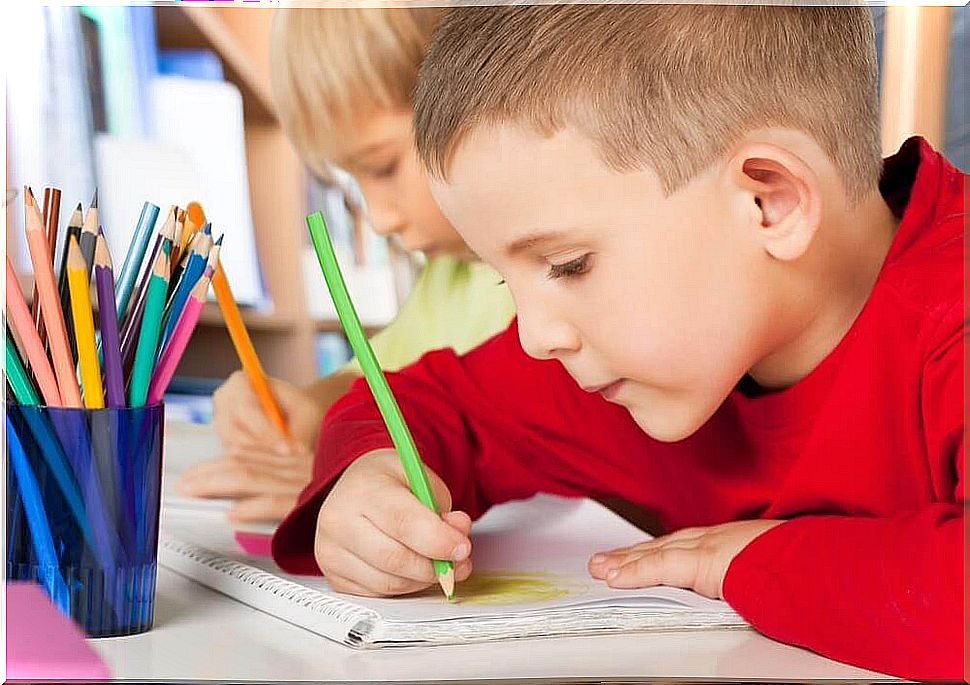
Likewise, it is important to know at which evolutionary moment it is more accurate to apply projective tests such as the drawing of the family itself:
- Up to three years we could speak of a scribbling stage, from which little information can be extracted.
- Between the ages of three and six, the child begins to handle the pencil, its tracing is more stable and it manages to represent its reality. However, it is still normal for him to make static and incomplete human figures.
- Between the ages of six and ten, the child is perfectly adept at handling the pencil and “mistakes” can really be interpreted from an emotional sense.
- From the age of ten, the maturity of the child already allows him to make drawings of great depth, with great realism about his emotions.
Application of the Family Drawing Test
Corman suggests applying the family drawing test as follows:
The child is given a pencil and a white sheet, he is not allowed to use other elements, for example, a ruler.
The indication is: “Draw a Family”, or, “Imagine a family that you invent and draw it”, if the child does not understand you can add: “Draw everything you want, the people of a family, and if you want objects or animals ”.
When you finish drawing, you are praised and asked to explain. Corman recommends asking a series of questions such as: Where are they? What are they doing there? Who is the best of all in this family? Why? Who is the happiest? And why? Who is the least happy? And why? Who in this family do you prefer? Supposing you were part of this family, who would you be?
These responses provide manifest contents of the child, which allow some knowledge about him. However, spontaneous verbalizations are more useful, since they represent associations that can more easily lead to latent content and the child’s wishes.
All the authors consider the questioning or spontaneous speech of the child necessary to interpret the test. Likewise, it is important to know the context in which the test is applied, since any drawing of the child has a value that depends on the interaction with the specialist who applies the test.
The order of appearance of the characters, the erasures, the doubts when drawing, as well as the setbacks must also be noted.
How to interpret the family drawing?
The family test or drawing was created by Porot in 1952. It was a personality test based on projective techniques that could be applied to children between the ages of 5 and 12. In its beginnings, it had a theoretical basis based on the psychoanalytic approach, however, from the 60s some modifications began to be made in it. It was then the French psychotherapist Louis Corman who perfected and popularized it as we understand it today.
In order to interpret the drawing of the family, attention must be paid to some specific elements, which are those that have been studied and have shown certain validity when interpreted. In addition to the verbalizations emitted by the child about the drawing, it is important to analyze:
1. The graphic plane
It is not a question of assessing the aesthetics of the drawing, but questions related to the size of the characters, the shape of the line, the pressure and the situation in the plane of the drawing as a whole. In this sense, it can be considered that the child is in a more balanced situation when the size of the drawing is normal, it is centered on the sheet, its continuous line and the medium pressure.
In relation to these aspects, it is usually interpreted that the character drawn larger has a greater meaning.
2. The content plan
It is important that when asked to draw the picture, the child is told to paint “a family” not “his family”, so he will feel less pressured and will reflect in the drawing how he feels.
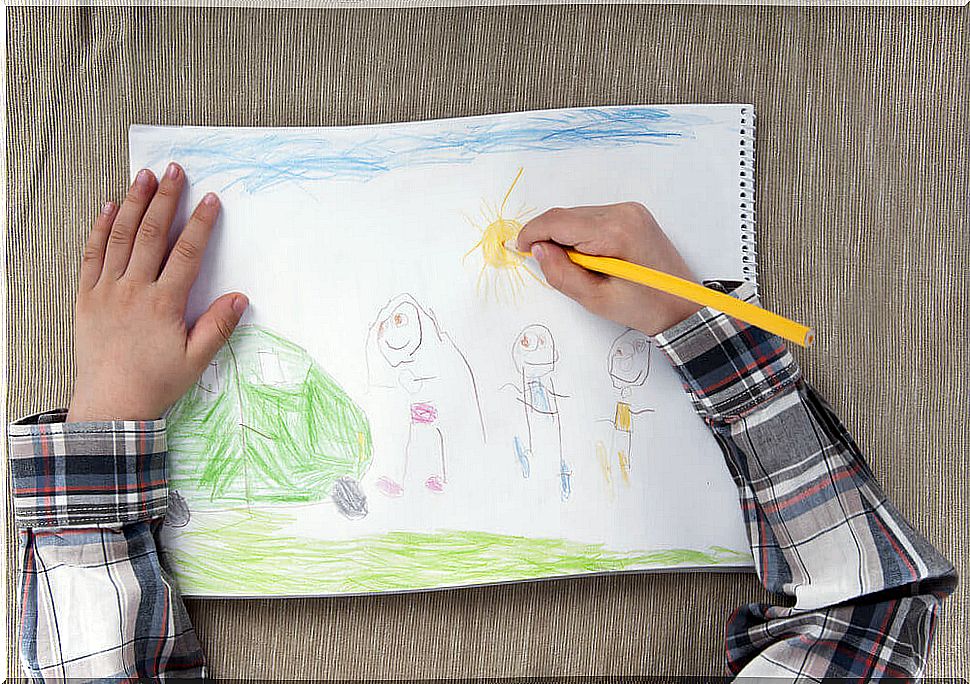
Thus, and just as an example, it is very common for children who are jealous of their siblings to draw only with their parents. When asked where the brother is, it is normal for him to answer that he is out for a walk or asleep.
It is also common for the child to be between the two parents, representing maximum security for him. Although it is not uncommon for him to be near one of them, it is necessary to find out if it is with whom he spends the most time or with whom he would like to spend more time.
As details we can highlight the absence of the drawing of the hands in some of the characters when the child already knows how to draw well. That may indicate a lack of affectivity.
3. Shades and dark colors
The use of strong colors, shading or even a stroke with greater force on a figure and not others, denotes a certain amount of anxiety or fear towards that particular person. If there is also a distance between that figure and that of the child, we would probably be facing some kind of problematic link.
Clinical validity of the family drawing
According to a study published by Professor Kenneth R. Russell in the journal Personality Assessment, the drawing of the family has a high clinical value. However, as we have pointed out at the beginning, it is a projective test that must be used in conjunction with other tools such as tests and personal interviews. In this way, we can make a more accurate diagnosis about the emotional reality of our little ones.
Knowing how to interpret the drawing of the family in children is therefore very important, and must be done by a professional. It offers us an opportunity to know what is hidden behind an innocent painting or scribbles, where more realities can be sensed than we thought at first.
